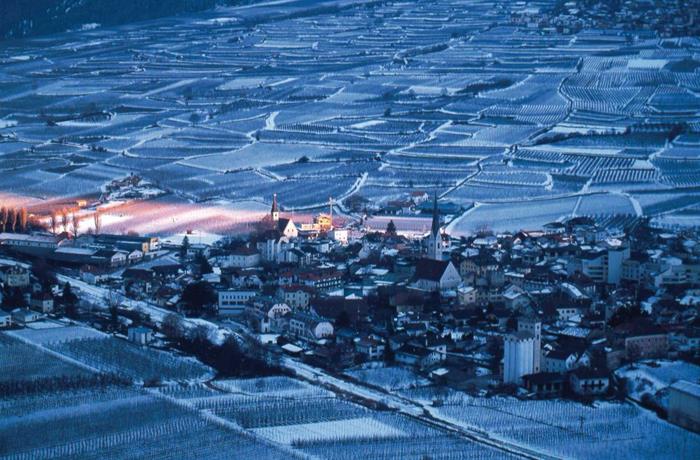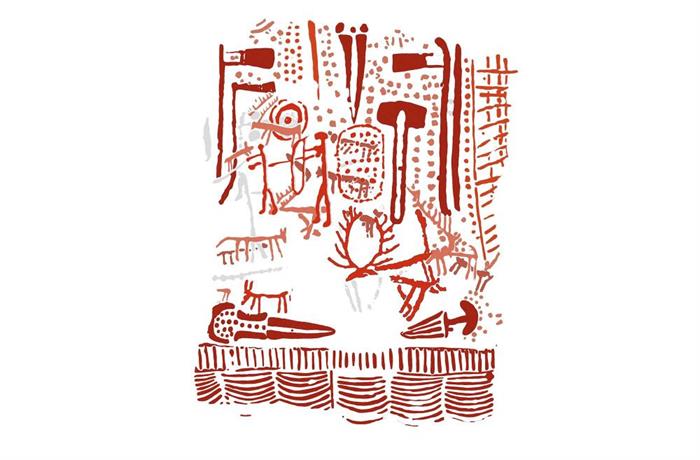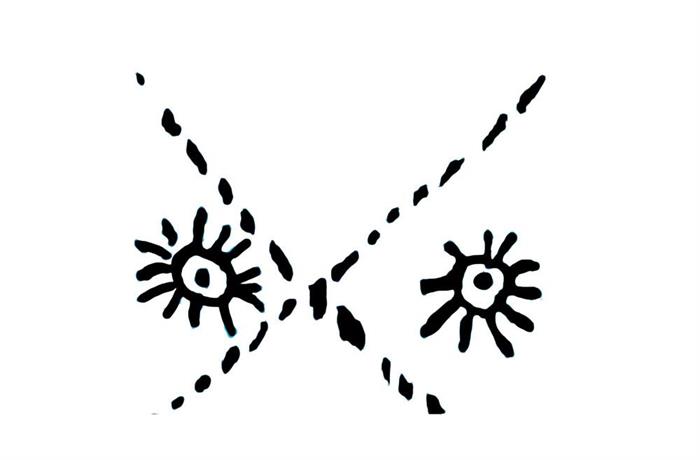Was ist ein Menhir? // What is a menhir?
Als Menhir wird ein hochragender Steinblock bezeichnet, der in vorgeschichtlicher Zeit von Menschen aufrecht gestellt wurde und häufig die Darstellung eines Menschen ist. Das Wort „Menhir“ ist aus dem Bretonischen entlehnt und bedeutet: maen Stein‘,hir lang. Menhire werden auch Bild-, Figuren- oder Hinkelsteine genannt. Sie stellen ein weit verbreitetes Phänomen der Kupferzeit im 3.und 4. Jahrtausend v. Chr. dar, welches fast im gesamten europäischen Raum bekannt ist. Im Alpenraum können sechs Gruppen unterschieden werden:
- Lunigiana-Gruppe (Ligurien, Toskana)
- Aostra-Sion-Gruppe (Aosta, Wallis)
- Valcamonica-Valtellina-Gruppe (Valcamonica, Veltlin)
- Lessinische-Gruppe (westliches Veneto)
- Brentonico-Gruppe (südliches Etschtal)
- Etschtal-Gruppe (Südtirol, Nonsberg, Sarcatal)
A menhir is a towering stone block erected by humans in prehistoric times that often represents humans. The word „menhir“ derives from Breton and means: maen stone‘,hir long. Other names for menhirs are picture stones and figure stones. Menhirs represent a widespread phenomenon of the Copper Age between the 4th and the 3rd millennium BC that is known nearly all around Europe. We can distinguish six groups in the Alpine arc:
- Lunigiana group (Liguria, Tuscany)
- Aosta-Sion group (Aosta, Valais)
- Valcamonica-Valtellina group (Valcamonica, Valtellina)
- Lessinia group (western Veneto)
- Brentonico group (southern Adige Valley)
- Adige Valley group (South Tyrol, Val di Non, Valle del Sarca)

Latsch am 23. Dezember // Laces on 23 December
Die Menhire der Etschtal-Gruppe // The menhirs of the Adige Valley group
Im Raum Südtirol und dem Trentino sind bisher 22 Menhire an 11 Orten entdeckt worden, zwei im nahegelegenen Vetzan, weitere in Tötschling, Feldthurns, Lajen, Völs, St. Verena am Ritten, Tramin, Revò, vier in Algund und acht in Arco. Charakterisiert durch die Motive der Bekleidung, der Tracht sowie der dargestellten Gegenstände zählen sie zur sogenannten Etschtal-Gruppe. Die Menhire der Etschtalgruppe bestehen aus sogenannten männlichen, weiblichen und neutralen Menhiren. Vereinzelt ist das Gesicht herausgearbeitet, bei den sogenannten weiblichen Menhiren auch die Brüste. Typisch für die Etschtal-Gruppe sind die senkrechten Streifen, die als Darstellung eines Mantels gedeutet werden können. Das Oberkleid des Mannes aus dem Eis, das sich aus mehreren länglichen abwechselnd hellen und dunklen Fellstreifen zusammensetzt, könnte so ein Mantel sein. Männliche Menhire sind mit Gewandnadeln (Hammerkopfnadeln) und einem umlaufenden girlandenförmigen Gürtel gekennzeichnet, außerdem tragen sie Äxte, Stabdolche und Dolche sowie Pfeil und Bogen oberhalb des Gürtels. Weibliche Menhire mit angedeuteten Brüsten tragen Collier und Doppelspiralen.
22 menhirs have been discovered in 11 different places in South Tyrol and Trentino so far: two in nearby Vezzano, others in Tecelinga, Velturno, Laion, Fiè allo Sciliar, Santa Verena, Termeno, Revò, four in Lagundo and eight in Arco. They belong to the so-called Adige Valley group due to the motifs on the clothes and the represented objects. The menhirs of the Adige Valley group consist of so-called male, female and neutral menhirs. The face is occasionally carved out as are the breasts for so-called female menhirs. Typical for the Adige Valley group are the vertical stripes, which can be interpreted as the representation of a cloak. The outer garment of Ötzi the Iceman, which is composed of several alternating light and dark fur strips, could be such a cloak. Male menhirs are characterized by cloakpins (hammer head pins) and a garland-shaped belt. They also carry axes, daggers as well as bow and arrow above the belt. Female menhirs have a necklace and double spirals.
Ausstattung des Menhirs von Latsch // The motifs on the Laces menhir
Der Latscher Menhir weist neben den ikonographischen Merkmalen der Etschtalgruppe auch Symbole der lombardischen Valcamonica-Gruppe auf. Er ist der Beweis dafür, dass die Kulturkreise der Bergregion im heutigen Nationalpark Stilfserjoch seit Tausenden von Jahren in Verbindung stehen. Am Menhir von Latsch sind verschiedene Phasen der Bearbeitung zu erkennen, weshalb manche Motive sich überlagern. Der Landesarchäologe Dr. Hubert Steiner beschreibt sie folgendermaßen:
In addition to the iconographic characteristics of the Adige Valley group the Laces menhir also shows symbols of the Lombardic Valcamonica group. That proves that the cultural areas of the mountain region of today’s Stelvio National Park have been connected with each other for thousands of years. The Laces menhir shows different development phases, which is why some motifs overlap. The provincial archeologist Dr. Hubert Steiner describes them in the following way:
Vorderseite: MOTIVE DER 1.PHASE
In der ältesten Phase wurde der Bildstein mit der „Standardausstattung“ eines männlichen Menhirs der Etschtal-Gruppe versehen:
- Der geraffte Gürtel im unteren Teil.
- Je zwei Beile links und rechts ober dem Gürtel, die in senkrechter Position seitlich angeordnet sind. Vermutlich folgt ein weiteres am oberen Bildrand.
- Oberhalb des Gürtels erscheinen horizontal positioniert zwei Dolche mit der Spitze zur Mitte hin. Der Dolch links mit Mittelrippe besitzt einen kugelförmigen Knauf und ist mit Grübchen gefüllt. Der Dolch rechts mit pilzförmigem Knauf gibt einen kennzeichnenden sog. „Remedellodolch" wieder.
- Ein senkrecht gestellter Dolch erscheint im oberen Bereich des Bildsteins.
- Ein weiteres Statussymbol bildet ein zentral befindlicher Gegenstand: Dabei handelt es sich entweder um eine Hammerkopfnadel oder — aufgrund der Größe wahrscheinlicher — eine Hammeraxt. Die Gegenstände sind teils von Grübchenreihen begleitet.
- Die obere rechte Hälfte zeigt mehrere schräge Rillen, die in die Schmalseite des Bildsteins überführen und von Strichreihen gefüllt sind. Sie geben ein offenbar vorne offen getragenes Gewand wieder.
- Gebogene Linien am Rand könnten einen Bogen darstellen.
Front: MOTIFS OF THE 1ST PHASE
In the oldest phase, the picture stone was equipped with the “standard representations“ of a male menhir of the Adige Valley group:
- There is a ruffled belt in the lower part.
- There are two vertically positioned and laterally placed axes to the left and two to the right above the belt. There is probably another one at the upper edge.
- Above the belt there are two horizontally positioned daggers pointed to the center. The dagger on the left with midrib has a globular pommel and is filled with dimples. The dagger on the right with a mushroom-shaped pommel represents a so-called „Remedello dagger".
- A vertically positioned dagger appears in the upper part of the picture stone.
- Another status symbol is the centrally positioned object: It is either a hammer head pin or a hammer axe, which is more probable due to the size. The objects are partially accompanied by rows of dimples.
- The upper right half shows several oblique grooves that lead to the narrow side of the picture stone and are filled with rows of lines. They undoubtedly represent a garment apparently worn open at the front.

Motive // Motifs
MOTIVE AUS WEITEREN PHASEN // MOTIFS FROM OTHER PHASES
In den folgenden Bearbeitungsphasen sind Einflüsse aus der Valcamonica-Valtellina-Gruppe zu erkennen. Die Darstellungen überlappen sich zum Teil, was darauf hinweist, dass diese in mehreren Phasen entstanden sind.
- Eine für das Etschtal einzigartige Darstellung bildet ein Jäger mit angesetztem Pfeil und Bogen.
- Hinter ihm erscheint ein rechteckig bis ovales Gebilde mit Punktfüllung, das vielleicht als Netz zu verstehen ist, welches bei der Jagd zum Einsatz kam.
- Vor dem Jäger befindet sich eine Figur.
- Schließlich sind in der rechten Bildhälfte zwei Hirsche dargestellt.
- Auf der linken Seite befindet sich oberhalb des Dolches vermutlich ein Hund.
- Oberhalb davon will man einen Wagen erkannt haben. Dies bleibt allerdings ungewiss, vermutlich handelt es sich dabei um zwei weitere Tiere.
The following development phases show influences of the Valcamonica-Valtellina group. The representations partially overlap, which indicates that they developed during different phases.
- The hunter with bow and arrow is a representation that is unique for the Adige Valley group.
- Behind him there is a rectangular-oval shaped object filled with dots that is probably a net for hunting.
- There is a figure in front of the hunter.
- Two deer are represented on the right side.
- There is probably a dog above the dagger on the left side.
- A cart was identified above it, which, however, remains questionable. They probably are two other animals.
Rückseite // Back
Die Rückseite ist geprägt von der zur Etschtal-Gruppe üblichen Ausstattung: dem Mantel und dem Gürtel. Spannend bleibt die Darstellung der Sonnen und die sich kreuzenden Bänder. Prof. Dr. Annaluisa Pedrotti weist auf die Möglichkeit hin, dass die Hinterseite des Menhirs als weiblicher Figurenstein genutzt wurde. In diesem Falle stehen die Sonnen für die Brüste. Möglicherweise weisen die Symbole auch auf ein Sonnen-Phänomen hin, welches noch heute jährlich einen Tag vor Weihnachten am Auffindungsort des Menhirs der Kirche zu Unserer Lieben Frau auf dem Bichl stattfindet.
The backside is characterized by the typical representations of the Adige Valley group: the cloak and the belt. The representation of the suns and the large X, however, remains exciting. Prof. Dr. Annaluisa Pedrotti refers to the possibility that the backside of the menhir could have been used as a female figure stone. In this case, the suns stand for the breasts. However, these symbols might also refer to a sun phenomenon that takes places every year one day before Christmas at the menhir’s site of the find at the Church of Our Dear Lady on the Bichl.

Motive // Motifs